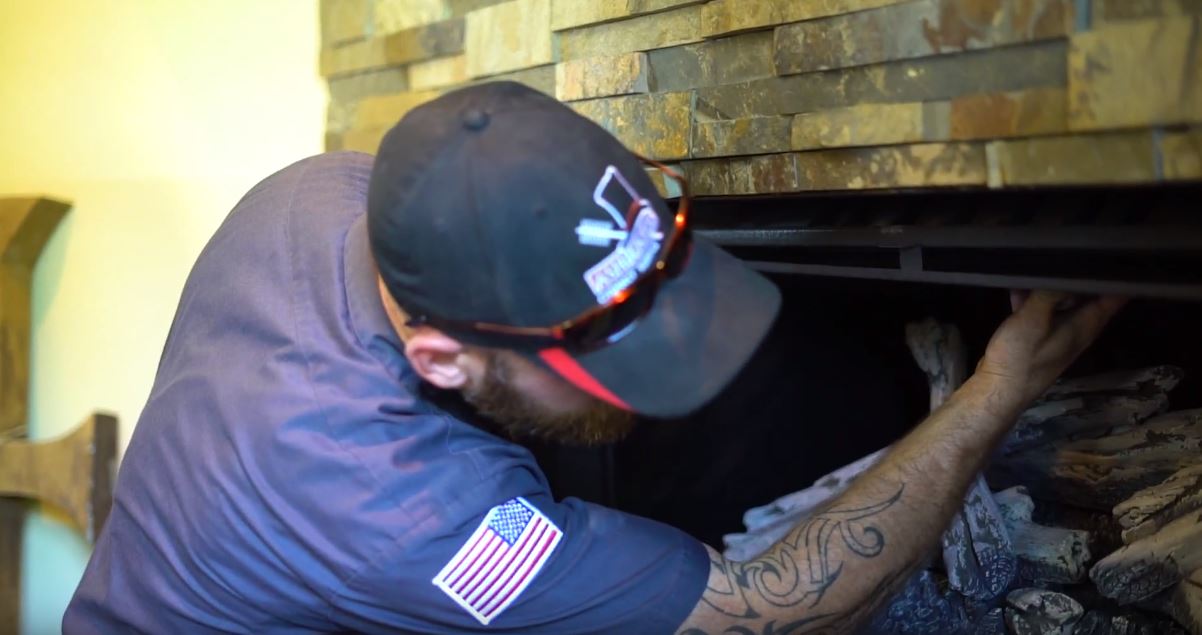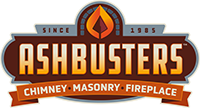The 4 Most Common Causes of Draft Issues
Has firing up the fireplace become a smoky affair? Smoky fireplaces are usually caused by draft issues. But before we dive into what those common issues are and how you can fix them, let’s talk about what chimney draft is…
What is Chimney Draft?

Chimney draft is basically the negative pressure inside the chimney that causes the smoke to be pulled up and out of the house. Draft isn’t created by a huge vacuum or suction, but by air that’s simply a little more negative than the surrounding air. It’s measured in a negative number — what’s called water column (WC) — and it’s a very small negative number.
The trouble is, a lot of things can affect that number just a little bit, and then all of the sudden the chimney isn’t drafting well. That’s why chimney draft can be a little bit fickle.
When a chimney isn’t drafting well or draft is reversed, it fails to pull the smoke up out of the chimney and home, and you end up with that smoke inside of your living space.
Now, let’s talk about some of the most common causes of draft issues and what you can do about them…
#1 Proper Draft Hasn’t Been Established
One of the most common causes is that cold air is literally falling into the chimney because a draft hasn’t been established before starting a fire.
What do we mean?
Imagine there’s a huge column of cold air sitting above your damper. Well, when you open the damper, sometimes the cold air falls faster than the warm air can rise out. Thus, the draft is reversed.
To prevent this, the best thing to do before you start a fire is to establish that the draft is going in the right direction. You can do this by taking a piece of newspaper, making a little torch, and holding it up into the flue to make sure the the smoke is in fact going up and out of the chimney and not being pushed into the house. Once you see the smoke rising up and out of the chimney, you can light the fire in the fireplace.
#2 Negative Pressure
Sometimes draft can be reversed by negative pressure in the house. For example, if your doors are shut and you have your furnace running, the house is under negative pressure. So when you start the fire in the fireplace, the house is literally pulling air down through the chimney.
Sometimes fixing this problem is as simple as cracking a window or door to get the negative pressure to stop pulling air down the chimney.
#3 Wind
There can also be wind-induced downdrafts, which are more sporadic and only occur when the wind blows. What’s happening is that the wind is literally hitting the top of the chimney and blowing air down into the chimney.
A chimney cap can either help or hurt this. For example, depending on the angle, the cap could deflect wind away from the chimney or direct it into the chimney. That said, there are specialty chimney caps that will eliminate wind-induced downdrafts.
#4 Location
Interestingly enough, even just the location of the chimney can affect draft. For example, if the whole chimney is outside of or on the exterior of the home rather than running through the middle of the home, it’s more likely to have draft issues. The reason is that a chimney that runs through the home will stay warmer than a chimney on the exterior, so smoke will more easily flow up and out of the home.
#5 Chimney Height
A lot of times, people mistakenly raise the chimney up thinking it’s going to lead to a big draft improvement. The height of the chimney can affect the draft, but most of the time it’s only in a very small way.
The only time we really raise the chimney up is if it’s too close to another object, or somebody has built a second story on the house and the chimney is too short in relation to the new addition. In that regard, chimney height is important and can have an effect on draft.
If you think of the top of the house as your water level, and your chimney as a snorkel, your chimney needs to get up above the water level in order to work. If it’s below the height of the house or an area of the house, it’s like being below water, and the house will literally suck the air down the chimney and let it out at the top of the house (through the gables or the roof vents).
What Causes Chimney Draft Issues?
Two Common Issues People Confuse With Poor Draft
Now that you know the most common causes of chimney draft issues, let’s look at some things that many people assume are draft-related, but aren’t.
There are a couple of common issues that aren’t related to draft that can cause you to have a smoky chimney…
#1 Poor flow
You can have a chimney that drafts well but doesn’t have good flow, so it smokes. Flow is determined by the ratio between the size of the fireplace opening and the size of the flue.
If your chimney and fireplace were built properly, you should have adequate flow, but many times, builders don’t know this ratio. They don’t understand how these two things interact, and so they build the flue too small or the firebox size too big.
If you have a flow issue:
- we may come in and make the fireplace smaller
- we may put in a type of closed unit, like a wood stove insert or direct vent gas insert, which bypasses the flow problem because it has its own pipes to go in the chimney
- or, we may break out the chimney flue itself and put a larger one in if possible
If none of these options are possible, we may install a mechanical draft fan on top of the chimney to increase flow.
#2 A Closed Damper
A lot of times when homeowners think they have a draft problem, it’s really something much simpler: the damper is closed.
The damper is the mechanism that closes off the flue system so you’re not losing heat when the fireplace isn’t in use. You open the damper when you’re using your fireplace and close it when you’re not.
If your fireplace has always worked normally but suddenly you’re having smoke problems, check the damper first to make sure it’s open.
And as always, if you are having any issues at all with your fireplace give the Ashbusters team a call. That’s what we’re here for!
